| Listing 1 - 10 of 14 | << page >> |
Sort by
|
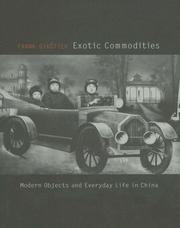
ISBN: 9780231141161 0231141165 Year: 2007 Publisher: New York Columbia university press
Abstract | Keywords | Export | Availability | Bookmark
 Loading...
Loading...Choose an application
- Reference Manager
- EndNote
- RefWorks (Direct export to RefWorks)
Material culture --- Culture matérielle --- China --- Chine --- Social conditions --- Conditions sociales --- S10/0220 --- S10/0590 --- China: Economics, industry and commerce--General works and economic history: 1840 - 1911 --- China: Economics, industry and commerce--Distribution --- S11/0502 --- S17/0410 --- Culture --- Folklore --- Technology --- China: Social sciences--Daily life: 1840 - 1911 --- China: Art and archaeology--Symbolism in Chinese art, iconography
Book
ISBN: 9789044641363 9044641360 Year: 2020 Publisher: Amsterdam Prometheus
Abstract | Keywords | Export | Availability | Bookmark
 Loading...
Loading...Choose an application
- Reference Manager
- EndNote
- RefWorks (Direct export to RefWorks)
Geen enkel land ter wereld staat de laatste jaren zozeer in de belangstelling als China. De groeiende economische en politieke invloed van China betekent een terugkeer van het land als grootste economie ter wereld. Maar tegelijkertijd is de rol van China in de moderne wereld fundamenteel anders dan ooit tevoren. 'De wederopstanding van China' volgt de ontwikkeling van China's rol op het wereldtoneel, vanaf de Opiumoorlog tot nu. Wat begon als een reactie op Europa's koloniale invloed is geleidelijk veranderd in een streven van China om een leidende rol te spelen in de wereld. China is steeds beter in staat de wereldorde te vormen, maar wordt zelf ook gevormd door de wereldorde. Frans-Paul van der Putten beschrijft hoe diepgeworteld en verreikend China's ambitie is om mondiaal meer invloed te krijgen. Hij laat zien waar China's prioriteiten en beperkingen liggen, en dat het land pragmatisch genoeg is om compromissen te sluiten wanneer dat nodig is. Het boek gaat ook in op de vraag wat dit alles betekent voor Europa, en hoe het kan reageren op de opkomst van China.
International relations. Foreign policy --- International economic relations --- China --- S09/0250 --- S10/0220 --- S10/0230 --- S10/0240 --- China: Foreign relations and world politics--General works: after 1840 --- China: Economics, industry and commerce--General works and economic history: 1840 - 1911 --- China: Economics, industry and commerce--General works and economic history: 1911 - 1949 --- China: Economics, industry and commerce--General works and economic history: since 1949
Book
ISBN: 9782271137043 2271137047 Year: 2022 Publisher: Paris CNRS
Abstract | Keywords | Export | Availability | Bookmark
 Loading...
Loading...Choose an application
- Reference Manager
- EndNote
- RefWorks (Direct export to RefWorks)
Entre 1550 et la fin du XIXe siècle, la Chine connaît un modèle économique autochtone unique. Au croisement de l'histoire, de la géographie et de l'économie, l'auteur en dévoile le fonctionnement et les logiques. Alors que les empereurs limitent l'accumulation de richesses et de capital, institutions économiques, réseaux marchands et échanges prospèrent selon des modes familiaux et claniques. ©Electre 2022
Capitalism --- History --- China --- Economic conditions. --- Conditions économiques -- Chine --- Economie politique --- S10/0210 --- S10/0220 --- China: Economics, industry and commerce--General works and economic history: before 1840 --- China: Economics, industry and commerce--General works and economic history: 1840 - 1911 --- History. --- Economic conditions
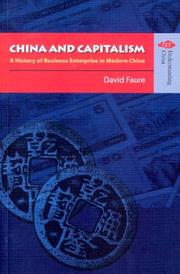
ISBN: 9882206697 128270852X 9786612708527 9882203833 9622097839 9622097847 9789882203839 9789882206694 9789622097834 9789622097841 9781282708525 6612708522 Year: 2006 Publisher: Hong Kong : Hong Kong University Press,
Abstract | Keywords | Export | Availability | Bookmark
 Loading...
Loading...Choose an application
- Reference Manager
- EndNote
- RefWorks (Direct export to RefWorks)
This book describes China's encounter with capitalism from the sixteenth century to the twentieth century. It poses poignant questions in simple language, guides the reader through a complex literature and presents a unique point of view.
Capitalism --- Business enterprises --- History. --- China --- Economic conditions --- Business organizations --- Businesses --- Companies --- Enterprises --- Firms --- Organizations, Business --- Business --- S10/0200 --- S10/0220 --- S10/0251 --- S10/1000 --- History --- China: Economics, industry and commerce--General works and economic history: general --- China: Economics, industry and commerce--General works and economic history: 1840 - 1911 --- China: Economics, industry and commerce--General works and economic history: since 1989 --- China: Economics, industry and commerce--Business ethics and philosophy
Book
ISBN: 9780300243734 Year: 2020 Publisher: New Haven, Conn. Yale University Press
Abstract | Keywords | Export | Availability | Bookmark
 Loading...
Loading...Choose an application
- Reference Manager
- EndNote
- RefWorks (Direct export to RefWorks)
"Tea War studies the competition between the tea industries of China and colonial India as an exploration of the history of capitalism. Liu challenges previous histories premised on the technical "divergence" between the West and the Rest, arguing that seemingly traditional technologies and practices were central to modern capitalist development in the tea districts of China and India. He explains how the pressures of competition compelled merchants in China to adopt abstract, industrial conceptions of time, while in India colonial capitalists pushed for labor indenture laws to support factory-style tea plantations. He also explains how characterizations of China and colonial India as premodern backwaters were themselves the historical result of new notions of political economy adopted by Chinese and Indian nationalists, who discovered that these abstract ideas corresponded to the concrete social changes in their local surroundings. Together, these stories point toward more flexible and globally oriented conceptualizations of capitalism"--
S10/0210 --- S10/0220 --- S10/0500 --- S21/0600 --- China: Economics, industry and commerce--General works and economic history: before 1840 --- China: Economics, industry and commerce--General works and economic history: 1840 - 1911 --- China: Economics, industry and commerce--Industries and industrialization: general and before 1911 (economic aspects come here) --- China: Medicine, public health and food--Chinese food and cookery, (incl. tea) --- Relations extérieures --- Chine --- China --- History --- History of Asia --- anno 1800-1899 --- India --- Relations extérieures
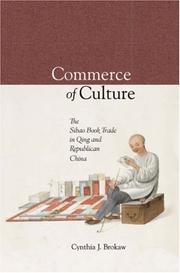
ISBN: 9780674024496 0674024494 1684174503 9781684174508 Year: 2007 Volume: 280 Publisher: Cambridge, Mass. Harvard University Asia Center
Abstract | Keywords | Export | Availability | Bookmark
 Loading...
Loading...Choose an application
- Reference Manager
- EndNote
- RefWorks (Direct export to RefWorks)
History of Asia --- Book history --- anno 1700-1799 --- anno 1800-1999 --- anno 1600-1699 --- China --- Book industries and trade --- Publishers and publishing --- Booksellers and bookselling --- Livres --- Editeurs et édition --- Libraires et librairie --- History. --- Industrie --- Histoire --- Sibao (China) --- Sibao (Chine) --- Chine --- Imprints. --- Intellectual life --- Imprimés --- Vie intellectuelle --- S01/0600 --- S10/0590 --- S10/0220 --- China: Bibliography and reference--Books, printing, editing and paper --- China: Economics, industry and commerce--Distribution --- China: Economics, industry and commerce--General works and economic history: 1840 - 1911 --- Editeurs et édition --- Imprimés --- Book publishing --- Books --- Book sales --- Book trade --- Cultural industries --- Manufacturing industries --- History --- Publishing --- Book dealers --- Dealers, Book
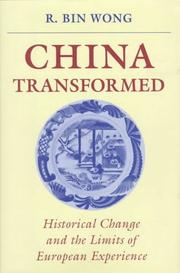
ISBN: 0801432545 0801483271 9780801483271 9780801432545 Year: 1997 Publisher: Ithaca (N.Y.): Cornell university press
Abstract | Keywords | Export | Availability | Bookmark
 Loading...
Loading...Choose an application
- Reference Manager
- EndNote
- RefWorks (Direct export to RefWorks)
History of Europe --- History of Asia --- China --- S10/0220 --- S06/0205 --- S10/0260 --- China: Economics, industry and commerce--General works and economic history: 1840 - 1911 --- China: Politics and government--Government and political institutions: Qing --- China: Economics, industry and commerce--The Chinese model --- S02/0310 --- S06/0210 --- S10/0240 --- China: General works--Intercultural dialogue --- China: Politics and government--Republic: 1911 - 1949 --- China: Economics, industry and commerce--General works and economic history: since 1949 --- Europe --- Economic conditions. --- History. --- Social conditions. --- History --- Economic conditions --- Social conditions --- Chine --- Histoire --- Conditions économiques --- Conditions sociales --- China - History --- Europe - History --- China - Economic conditions --- China - Social conditions --- Europe - Economic conditions --- Europe - Social conditions --- Situation économique --- Situation sociale
Book
ISBN: 9004353712 9789004353718 9789004353633 9004353631 Year: 2018 Publisher: Leiden Boston
Abstract | Keywords | Export | Availability | Bookmark
 Loading...
Loading...Choose an application
- Reference Manager
- EndNote
- RefWorks (Direct export to RefWorks)
The book 'Southwest China in Regional and Global Perspectives (c. 1600-1911)' is dedicated to important issues in society, trade, and local policy in the southwestern provinces of Yunnan, Guizhou and Sichuan during the late phase of the Qing period. It combines the methods of various disciplines to bring more light into the neglected history of a region that witnessed a faster population growth than any other region in China during that age. The contributions to the volume analyse conflicts and arrangements in immigrant societies, problems of environmental change, the economic significance of copper as the most important ?export? product, topographical and legal obstacles in trade and transport, specific problems in inter-regional trade, and the roots of modern transnational enterprise.
Finance --- Funding --- Funds --- Economics --- Currency question --- History. --- China, Southwest --- Southwest China --- Economic conditions. --- Social conditions. --- Commerce --- S03/0612 --- S03/0624 --- S03/0625 --- S10/0210 --- S10/0220 --- S10/0300 --- S10/0610 --- S10/0620 --- History --- China: Geography, description and travel--Sichuan --- China: Geography, description and travel--Guizhou --- China: Geography, description and travel--Yunnan --- China: Economics, industry and commerce--General works and economic history: before 1840 --- China: Economics, industry and commerce--General works and economic history: 1840 - 1911 --- China: Economics, industry and commerce--Money and banking: general and before 1911 --- China: Economics, industry and commerce--Foreign trade and economic relations: before 1842 --- China: Economics, industry and commerce--Foreign trade and economic relations: 1842 - 1949 --- E-books
Book
ISBN: 0774825979 9780774825955 0774825952 9780774825979 9780774825986 0774825987 9780774825962 Year: 2014 Publisher: Vancouver [British Columbia]
Abstract | Keywords | Export | Availability | Bookmark
 Loading...
Loading...Choose an application
- Reference Manager
- EndNote
- RefWorks (Direct export to RefWorks)
The Jianghan Plain in central China has been shaped by its relationship with water. Once a prolific rice-growing region that drew immigrants to its fertile paddy fields, it has, since the eighteenth century, become prone to devastating flooding and waterlogging. Jiayan Zhang consults early records of catastrophic water events and explores their role in shaping Jianghan society in the Qing and Republican periods. In a constantly shifting environment, the peasants of Jianghan were forced to adapt their farming methods; cooperate on complex projects like dike building; and even organize social structures, tenancy arrangements, and lifestyles around the pressure and uncertainty of their environment. The first environmental and socioeconomic history of the region, Coping with Calamity considers the Jianghan Plain's volatile environment, the constant challenges it presented to peasants, and their often ingenious and sophisticated responses.
Peasants --- Agricultural ecology --- Wetland ecology --- Wetlands ecology --- Ecology --- Agriculture --- Agroecology --- Permaculture --- Peasantry --- Agricultural laborers --- Rural population --- Marks (Medieval land tenure) --- Villeinage --- Social conditions. --- Economic conditions. --- History. --- Environmental aspects --- Jianghan Region (China) --- Rural conditions. --- Environmental conditions --- S20/0500 --- S10/0210 --- S10/0220 --- S10/0230 --- China: Agriculture forestry, fishery, natural disasters--Environmental policy, pollution --- China: Economics, industry and commerce--General works and economic history: before 1840 --- China: Economics, industry and commerce--General works and economic history: 1840 - 1911 --- China: Economics, industry and commerce--General works and economic history: 1911 - 1949
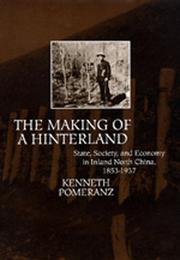
ISBN: 0520080513 9780520080515 Year: 1993 Publisher: Berkeley, Calif. University of California Press
Abstract | Keywords | Export | Availability | Bookmark
 Loading...
Loading...Choose an application
- Reference Manager
- EndNote
- RefWorks (Direct export to RefWorks)
Economic policy and planning (general) --- anno 1900-1999 --- anno 1800-1899 --- China --- Shandong Sheng (China) --- Shandong (Chine) --- Economic policy. --- Economic conditions. --- Politics and government --- Politique économique --- Conditions économiques --- Politique et gouvernement --- Politique économique --- Conditions économiques --- Politics and government. --- S03/0602 --- S10/0220 --- S10/0230 --- China: Geography, description and travel--Shandong --- China: Economics, industry and commerce--General works and economic history: 1840 - 1911 --- China: Economics, industry and commerce--General works and economic history: 1911 - 1949 --- Shantung, China --- Shandong (China : Province) --- Shan-tung sheng (China) --- Shantung Province (China) --- Santō-shō (China) --- Schantung (China) --- Shan Dong Province (China) --- Shan dong sheng (China) --- Shan-tung (China : Province) --- Shan dong (China : Province) --- 山东省 (China) --- Economic conditions --- History
| Listing 1 - 10 of 14 | << page >> |
Sort by
|

 Search
Search Feedback
Feedback About UniCat
About UniCat  Help
Help News
News